HSF1 / YGL073W Overview
- Standard Name
- HSF1 1
- Systematic Name
- YGL073W
- SGD ID
- SGD:S000003041
- Aliases
- EXA3 13 , MAS3
- Feature Type
- ORF , Verified
- Description
- Trimeric heat shock transcription factor; forms condensate with Mediator and RNA Pol II upon heat shock; activates multiple genes in response to diverse stresses and transient intracellular acidification; recognizes variable heat shock elements (HSEs) consisting of inverted NGAAN repeats; monitors translational status through RQC (Ribosomal Quality Control)-mediated translation-stress signal; human homolog HSF1 with linker region mutations can complement yeast hsf1 mutant 2 3 4 5 7 8 9 10 11 12
- Name Description
- Heat Shock transcription Factor 6
- Comparative Info
-
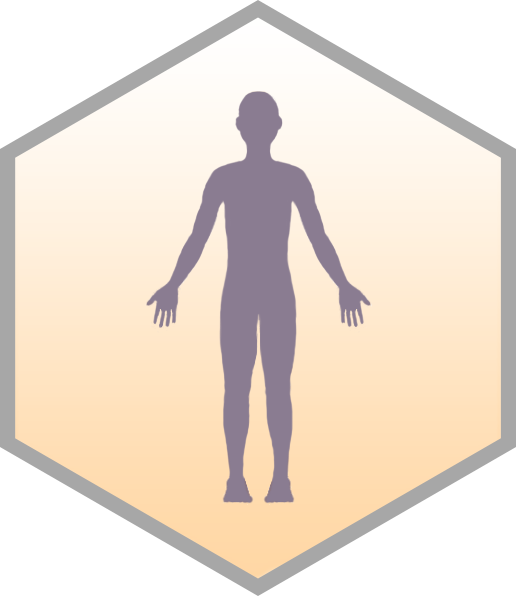
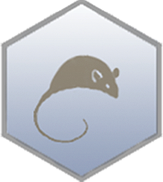
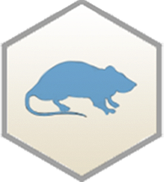
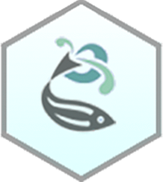
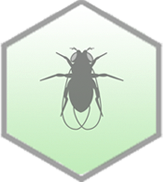

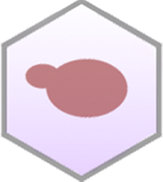
Sequence
The S. cerevisiae Reference Genome sequence is derived from laboratory strain S288C. Download DNA or protein sequence, view genomic context and coordinates. Click "Sequence Details" to view all sequence information for this locus, including that for other strains.
- Summary
- HSF1/YGL073W is located on the left arm of chromosome VII between MPS2 and AFT1 transcription factor; coding sequence is 2502 nucleotides long with 24 SNPs, 10 of which cause amino acid polymorphisms
Analyze Sequence
S288C only
BLASTN | BLASTP | Design Primers | Restriction Fragment Map | Restriction Fragment Sizes | Six-Frame Translation
S288C vs. other species
BLASTN vs. fungi | BLASTP at NCBI | BLASTP vs. fungi
S288C vs. other strains
Protein
Basic sequence-derived (length, molecular weight, isoelectric point) and experimentally-determined (median abundance, median absolute deviation) protein information. Click "Protein Details" for further information about the protein such as half-life, abundance, domains, domains shared with other proteins, protein sequence retrieval for various strains, physico-chemical properties, protein modification sites, and external identifiers for the protein.
- Summary
- Hsf1p is 833 amino acids long, of average half-life, low in abundance; contains disordered regions throughout protein and 3 heat shock factor (HSF)-type DNA-binding domains; acetylated on K219, phosphorylated on 27 residues
- Length (a.a.)
- 833
- Mol. Weight (Da)
- 93253.3
- Isoelectric Point
- 5.06
- Median Abundance (molecules/cell)
- 2222 +/- 1099
- Half-life (hr)
- 10.4
Alleles
Curated mutant alleles for the specified gene, listed alphabetically. Click on the allele name to open the allele page. Click "SGD search" to view all alleles in search results.
View all HSF1 alleles in SGD search
Gene Ontology
GO Annotations consist of four mandatory components: a gene product, a term from one of the three Gene Ontology (GO) controlled vocabularies (Molecular Function, Biological Process, and Cellular Component), a reference, and an evidence code. SGD has manually curated and high-throughput GO Annotations, both derived from the literature, as well as computational, or predicted, annotations. Click "Gene Ontology Details" to view all GO information and evidence for this locus as well as biological processes it shares with other genes.
- Summary
- Sequence-specific DNA binding transcription factor that induces expression of the Hsp90-family protein chaperones Hsc82p and Hsp82p during the cellular response to heat; also negatively regulates TOR signaling
View computational annotations
Molecular Function
- Manually Curated
- enables DNA-binding transcription factor activity (IDA)
- enables sequence-specific DNA binding (HDA)
Biological Process
- Manually Curated
- involved in cellular response to heat (IMP)
- involved in negative regulation of TORC1 signaling (IMP)
- involved in positive regulation of transcription by RNA polymerase II (IMP)
- involved in regulation of establishment of protein localization to chromosome (IMP)
- involved in regulation of transcription by RNA polymerase II (IDA)
- involved in regulation of translation in response to stress (IDA)
- involved in response to heat (IMP)
Cellular Component
- Manually Curated
- located in mitochondrion (HDA)
- located in nucleus (IDA)
Phenotype
Phenotype annotations for a gene are curated single mutant phenotypes that require an observable (e.g., "cell shape"), a qualifier (e.g., "abnormal"), a mutant type (e.g., null), strain background, and a reference. In addition, annotations are classified as classical genetics or high-throughput (e.g., large scale survey, systematic mutation set). Whenever possible, allele information and additional details are provided. Click "Phenotype Details" to view all phenotype annotations and evidence for this locus as well as phenotypes it shares with other genes.
- Summary
- HSF1/YGL073W is an essential gene, null mutants are inviable; overexpression arrests growth in haploid, increases invasive growth in diploid; reduced function decreases resistance to TOR innibitor rapamycin, increases competitive fitness; conditional alleles confer sensitivity to heat and to microtubule-destabilising agent benomyl; R206S substitution makes protein constitutively active
Classical Genetics
- overexpression
- conditional
- cell cycle progression in G2 phase: increased duration
- cell cycle progression in M phase: increased duration
- heat sensitivity: increased
- mitotic cell cycle: arrested
- protein/peptide accumulation: increased
- protein/peptide distribution: abnormal
- resistance to chemicals: decreased
- spindle morphology: abnormal
- null
- activation
- reduction of function
- null
- overexpression
- reduction of function
- conditional
Large-scale Survey
Interaction
Interaction annotations are curated by BioGRID and include physical or genetic interactions observed between at least two genes. An interaction annotation is composed of the interaction type, name of the interactor, assay type (e.g., Two-Hybrid), annotation type (e.g., manual or high-throughput), and a reference, as well as other experimental details. Click "Interaction Details" to view all interaction annotations and evidence for this locus, including an interaction visualization.
- Summary
- Hsf1p interacts physically with proteins involved in transcription; HSF1 interacts genetically with genes involved in mitotic cell cycle
567 total interactions for 431 unique genes
Physical Interactions
- Affinity Capture-MS: 23
- Affinity Capture-RNA: 4
- Affinity Capture-Western: 12
- Biochemical Activity: 13
- Co-localization: 4
- Protein-peptide: 1
- Proximity Label-MS: 11
- Reconstituted Complex: 7
- Two-hybrid: 4
Genetic Interactions
- Dosage Rescue: 16
- Negative Genetic: 379
- Phenotypic Enhancement: 2
- Phenotypic Suppression: 6
- Positive Genetic: 62
- Synthetic Growth Defect: 3
- Synthetic Haploinsufficiency: 2
- Synthetic Lethality: 6
- Synthetic Rescue: 12
Regulation
The number of putative Regulators (genes that regulate it) and Targets (genes it regulates) for the given locus, based on experimental evidence. This evidence includes data generated through high-throughput techniques. Click "Regulation Details" to view all regulation annotations, shared GO enrichment among regulation Targets, and a regulator/target diagram for the locus.
- Summary
- HSF1 encodes an evolutionarily conserved winged helix-turn-helix transcription factor of the E2F family that binds 5'-ATGGAACR-3' sequence motifs. Hsf1p is involved in upregulating the transcription of heat-shock-responsive genes after robust increases in temperature. Hsf1p contains a DNA-binding domain, three leucine zipper repeats responsible for Hsf1p trimerization, a C-terminal transactivation domain, and an N-terminal transactivation domain. All Hsf1p target gene promoters contain multiples of the pentameric sequence 5'-NGAAN-3', termed heat shock elements (HSEs). Hsf1p recognizes both continuous and discontinuous repeats of HSEs. The active DNA-binding form of Hsf1p is a homotrimer. While each HSE is a recognition site for a single Hsf1p monomer, a minimum of three pentameric units is required for stable binding. Some target genes contain four to six contiguous HSEs that are bound by two Hsf1p homotrimers, or seven to eight units that may recruit up to three colocalized homotrimers. However, a single Hsf1p trimer is sufficient to activate transcription. Hsf1p is constitutively bound on target promoters as a homotrimer even in the absence of stress, and its activation function is modulated at the post-translational level. Hsf1p is rapidly phosphorylated after heat shock, and conversion of Hsf1p into the active form occurs simultaneously with extensive phosphorylation. Hsf1 is phosphorylated at different phosphor-acceptor sites in response to heat or menadione, suggesting stress-specific phosphorylation. Hyperphosphorylation generally correlates with the transactivation of Hsf1p, though some phosphorylation events repress its transcriptional activity. Hsf1p is likely phosphorylated by one or more serine-threonine protein kinases, such as Snf1p and/or Yak1p. The Hsp70/Hsp90 chaperone complex appears to repress the transcriptional activation activity of Hsf1p under nonstress conditions. During heat shock, the accumulation of unfolded or damaged proteins may titrate the chaperone machinery from Hsf1p, allowing the derepression of Hsf1p.
Expression
Expression data are derived from records contained in the Gene Expression Omnibus (GEO), and are first log2 transformed and normalized. Referenced datasets may contain one or more condition(s), and as a result there may be a greater number of conditions than datasets represented in a single clickable histogram bar. The histogram division at 0.0 separates the down-regulated (green) conditions and datasets from those that are up-regulated (red). Click "Expression Details" to view all expression annotations and details for this locus, including a visualization of genes that share a similar expression pattern.
Summary Paragraph
A summary of the locus, written by SGD Biocurators following a thorough review of the literature. Links to gene names and curated GO terms are included within the Summary Paragraphs.
Last Updated: 2006-11-13
Literature
All manually curated literature for the specified gene, organized into topics according to their relevance to the gene (Primary Literature, Additional Literature, or Review). Click "Literature Details" to view all literature information for this locus, including shared literature between genes.